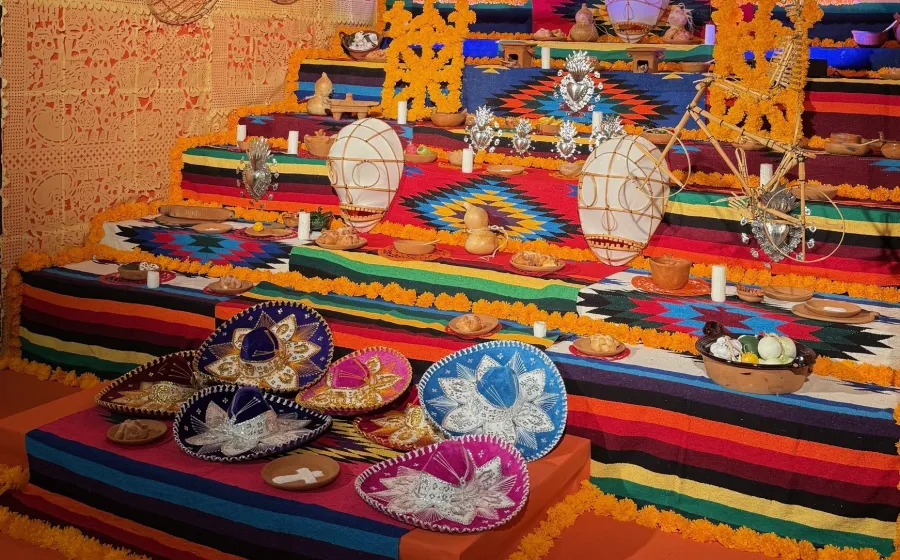ALTAR DE MUERTOS MATADERO MADRID
Accesibilidad
Reduced mobility
Date
Venue
Price
Free access
Category
Format
Life and death are mysteries that different cultures around the world have approached in their own ways. The Day of the Dead is a clear example of syncretism — the fusion of two cultures: the Mesoamerican and the Catholic rituals brought to Mexico by the Spanish in the 16th century. Because it shares both pre-Hispanic and Western roots, it intertwines the diverse imaginaries of both worldviews and has become one of the essential traits of Mexican identity.
It is an ancestral tradition that celebrates the temporary return of deceased family members and loved ones, symbolizing the reunion between the living and the dead. Indigenous peoples adapted their veneration of the dead to the Christian calendar, coinciding with the end of the corn harvest cycle — their main source of sustenance. For that reason, it is celebrated on November 2, the day after All Saints’ Day.
During this celebration, sadness and nostalgia are transformed into joy, remembrance, affection, and memory for loved ones — an attitude that embraces the vast realm of the unknowable, choosing movement and light over darkness and stillness. In this way, ancestors and departed friends are honored in a colorful, festive, and loving manner. For a few hours, they return to the world of the living to reunite with their families and enjoy the favorite dishes of the departed. This festivity was declared Intangible Cultural Heritage of Humanity by UNESCO in 2003.
Considered one of the most significant expressions of Mexico’s living heritage — and indeed of the world’s — the Day of the Dead is also seen as a celebration of memory, a ritual that privileges remembrance over oblivion. The act of transforming sorrow into joy, remembrance into joyful presence, tears into laughter, and mourning into festivity represents one of the most powerful symbolic contributions that Mexico has offered to the global imagination. The altars of the dead (altares de muertos) serve as playful, communal spaces for collective reconciliation with memory, helping people process grief together and fostering empathy as a form of shared mourning.
Altars of the dead are set up throughout Mexico. This widespread practice has given rise to hybrid expressions that renew, diversify, and reinterpret the forms and traditions each community adopts in its own unique way. However, there are certain elements common to all altars: the representation of the four elements — water, earth (seeds), fire (candles), and air (cut paper decorations). In addition, objects of personal significance to the deceased are placed on the altar as offerings.


